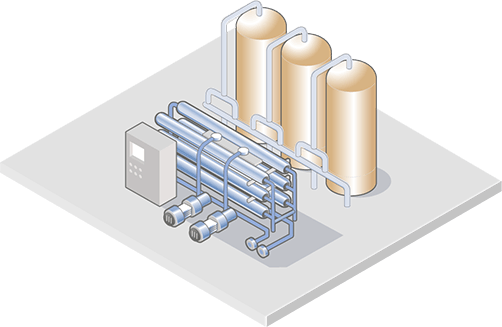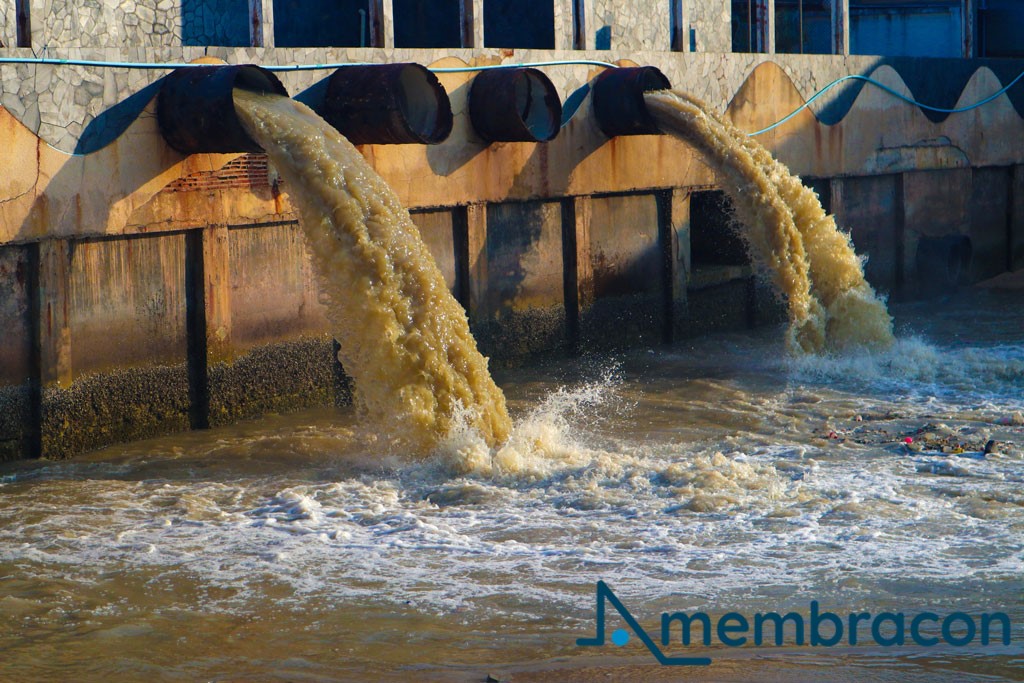Industrial Waste Water Treatment-- Industrial-Grade Water Purification and Purification Solutions
Industrial Waste Water Treatment-- Industrial-Grade Water Purification and Purification Solutions
Blog Article
Developments and Advances in Hazardous Waste Water Treatment Technologies
The landscape of commercial wastewater treatment is undertaking a transformative shift, driven by advancements that enhance both performance and sustainability. Emerging modern technologies, such as membrane bioreactors and microbial gas cells, are redefining contaminant removal procedures while adding to power generation. Source recovery techniques are obtaining traction, lining up with round economy principles. As governing standards develop, the assimilation of AI and machine knowing right into wastewater monitoring systems promises to guarantee and enhance procedures conformity. However, the full ramifications of these improvements elevate crucial concerns regarding their scalability and lasting influence on sector practices.
Summary of Waste Water Therapy Technologies
Wastewater therapy innovations include a series of methods made to get rid of pollutants from industrial effluents prior to their launch into the environment. These modern technologies are essential for preserving environmental balance and making certain compliance with environmental laws. The main categories of wastewater therapy include physical, chemical, and biological approaches, each serving distinctive functions based on the nature of the impurities present.

Biological therapy techniques use microorganisms to deteriorate raw material, making them specifically effective for organic-rich effluents. Techniques like triggered sludge and biofilm activators harness the all-natural destruction capacities of microorganisms, leading to considerable reductions in biochemical oxygen demand (BODY)
Advanced Filtering Methods
Advanced purification strategies stand for a critical evolution in the realm of industrial wastewater treatment, enhancing the efficiency of contaminant elimination procedures. Industrial Waste Water Treatment. These methods encompass a variety of technologies, consisting of microfiltration, ultrafiltration, nanofiltration, and turn around osmosis, which give consecutive obstacles for different bit sizes and chemical structures
Microfiltration and ultrafiltration utilize membrane layer systems to get rid of put on hold solids, germs, and larger organic particles, boosting the high quality of effluent before further treatment. Nanofiltration links the void between ultrafiltration and reverse osmosis, effectively getting rid of organic substances and divalent ions, hence minimizing the tons on downstream processes.
Reverse osmosis supplies the highest possible level of purification by permitting just water and small particles to travel through its semi-permeable membranes, making it ideal for redeeming high-grade water from commercial effluents. Recent innovations in membrane layer technology, consisting of the advancement of more sturdy and fouling-resistant materials, have actually considerably boosted operational performance and minimized costs.
Including these advanced purification methods not just improves the total treatment procedure but additionally contributes to sustainability initiatives by enabling water reuse and source recovery in industrial setups. (Industrial Waste Water Treatment)
Biological Therapy Innovations

In addition, the advancement of engineered organic systems, such as membrane bioreactors (MBRs), incorporates organic treatment with innovative membrane layer filtering. This integration permits higher effluent top quality and decreased impact, making it appropriate for space-constrained commercial facilities. Innovations in genetically crafted microorganisms have actually also arised, enhancing the biodegradation of certain contaminants, such as drugs and heavy metals, that are commonly challenging to get rid of.
Additionally, the execution of bioaugmentation techniques, where valuable germs are presented to enhance the existing biological therapy processes, has revealed encouraging outcomes in enhancing treatment efficiency. These innovations collectively indicate a trend towards more sustainable and efficient biological treatment approaches that can adapt to the progressing intricacies of commercial wastewater streams. As sectors continue to focus on ecological conformity, these biological innovations will play a critical duty in wastewater management.

Resource Recovery Methods
In commercial setups, the assimilation of source recuperation approaches has become progressively essential for improving sustainability and lessening waste. These approaches focus on drawing out valuable products and power from wastewater streams, consequently transforming potential contaminants right into reusable resources.
One prominent strategy is nutrition healing, where nitrogen and phosphorus, frequently existing in excess in wastewater, are captured and converted right into fertilizers. This not only see this site decreases environmental effects but also supplies a round economy remedy for farming applications. Furthermore, technologies such as anaerobic food digestion enable the conversion of organic waste right into biogas, a renewable power resource that can balance out nonrenewable fuel source use in commercial procedures.
Additionally, advanced purification and membrane technologies promote the healing of industrial byproducts such as salts and metals. These recouped materials can be rehabilitated into production processes, minimizing the requirement for virgin resources.
Future Fads in Drainage Management
As sectors significantly focus on sustainability, the future of wastewater monitoring is readied to go through substantial changes. Technological improvements, such as synthetic intelligence and equipment knowing, will certainly enable a lot more reliable tracking and management of wastewater systems. These modern technologies can predict maintenance demands, enhance therapy procedures, and boost decision-making, inevitably lowering functional expenses and environmental influence.
In addition, the combination of circular economic climate concepts will certainly play a vital function in wastewater administration. Industries are anticipated to change in the direction of systems that not just deal with wastewater however likewise recoup useful sources, such as nutrients, water, and power. This change will minimize waste and promote the reuse of materials, aligning with global sustainability goals.
Emerging treatment methods, such as membrane layer bioreactors and advanced oxidation processes, will certainly better improve the performance of wastewater treatment, enabling for higher quality effluents suitable for reuse. Additionally, governing frameworks are most likely to evolve, stressing more stringent criteria for wastewater discharge and encouraging sectors to take on ingenious treatment remedies.
Conclusion
In conclusion, the advancement of industrial wastewater treatment modern technologies demonstrates a considerable change towards boosted efficiency and sustainability (Industrial Waste Water Treatment). Innovations in innovative filtration strategies, biological treatments, and resource recuperation methods highlight the industry's commitment to important source environmental stewardship.
The landscape of commercial wastewater therapy is undertaking a transformative shift, driven by advancements that enhance both efficiency and sustainability.Wastewater therapy modern technologies include a range of techniques created to eliminate pollutants from industrial effluents before their launch into the environment.Harnessing the power of organic processes has actually led to considerable technologies in the therapy of commercial wastewater.In addition, the execution of bioaugmentation strategies, where valuable microbes are presented to improve the existing organic therapy processes, has shown appealing outcomes in improving treatment performance. These innovations jointly signify a trend towards even more efficient and lasting biological therapy methodologies that can adjust to the advancing look at this site intricacies of industrial wastewater streams.
Report this page